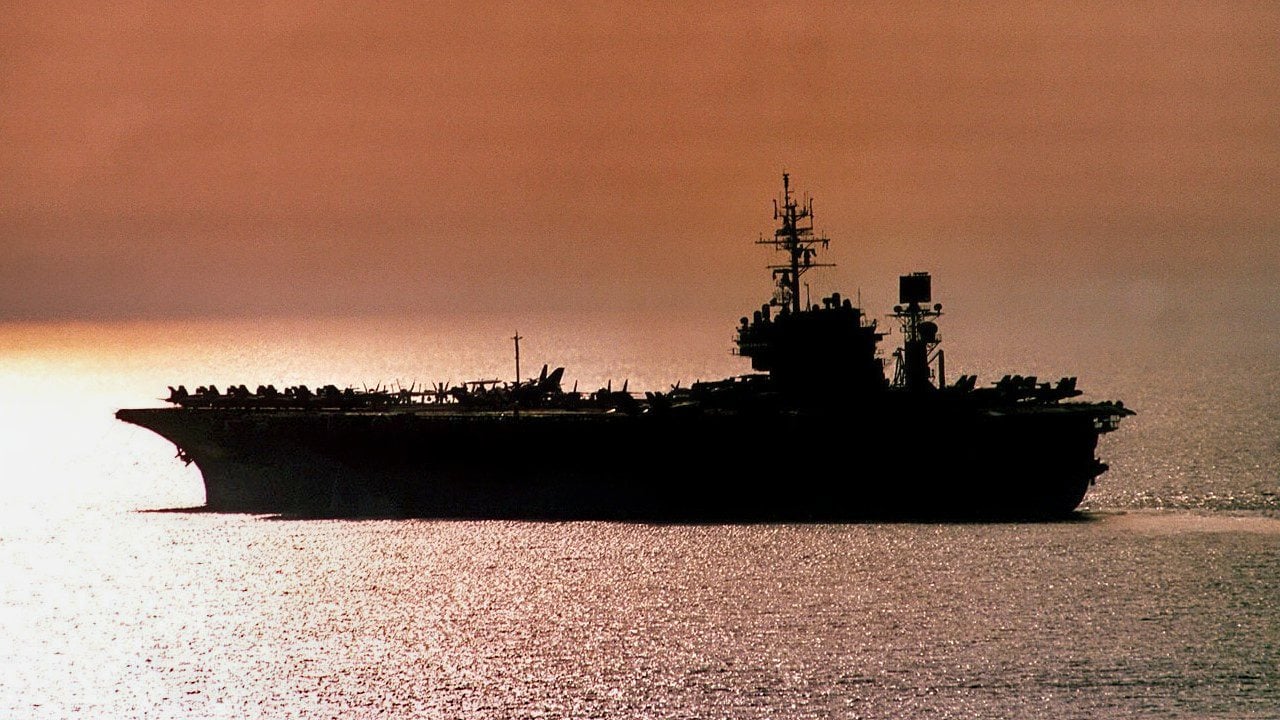USS Constellation: 1 Of the U.S. Navy's Best Aircraft Carriers Ever
The U.S. Navy aircraft carrier USS Constellation was decommissioned in 2003 after 41 years of service. Beginning in 2015, she was scrapped at Brownsville, Texas, and towed around Cape Horn on her final voyage.
Summary and Key Points You Need to Know: The USS Constellation (CV-64), nicknamed "America's Flagship," was a Kitty Hawk-class supercarrier introduced in the early 1960s as part of the U.S. Navy's post-WWII carrier advancements.
-Known for its speed and enhanced operational capabilities, the Constellation played a key role in the Vietnam War, flying over 11,000 combat and support missions.
-The carrier featured improved elevator placements and advanced self-defense systems. After 41 years of service, the Constellation was decommissioned in 2003 and eventually scrapped in 2015 after being towed around Cape Horn.
USS Constellation: America's Flagship and Vietnam War Powerhouse
Nicknamed for her fast speed, USS Constellation (CV-64) was referred to by her crew as “America’s Flagship.” This Kitty Hawk-class supercarrier was introduced to service in the early 1960’s, amidst the U.S. Navy’s post-World War II push to develop advanced carriers.
The Kitty Hawk-class ships were an incremental improvement on the preceding Forrestal-class carriers. These vessels were colloquially designated as “supercarriers” due to their greater length and more sophisticated capabilities.
Introducing the Kitty Hawk-class:
The three Kitty Hawk-class carriers to enter service with the Navy were constructed at three different shipyards. The lead ship of the class, Kitty Hawk, was built at New York Shipbuilding Corporation. Subsequently, Constellation was built at New York Naval Shipyard and America at Newport News Shipbuilding.
A fourth ship, John F. Kennedy, was constructed as a Kitty Hawk variant. However, this carrier has been placed in her own class due to her distinct attributes.
USS Constellation:
USS Constellation, like her sister ships, featured improvements over her predecessors. In addition to possessing a greater length, more practical elevator placements were incorporated on the ship.
To be more functional, two elevators were placed forward, one aft and one on the portside stern. These positions enabled the elevators to function even while airframes were taking off and landing, enhancing the efficiency of flight operations onboard. Armament-wise, USS Constellation was built with a Terrier surface-to-air missile system. Over the years, the carrier was also upgraded to feature North Atlantic Treaty Organization (NATO) Sea Sparrow and Phalanx Close-In Weapon System (CIWS) for self-defense.
Operational history:
Not even eight weeks after USS Constellation was christened at the New York Naval Shipyard, a tragic fire broke out leading to the deaths of 50 workers and a whopping $75 million in damages. This mishap set back her commissioning date to late 1961.

Following a short shake-down cruise in the Caribbean, Constellation would spend 1962 with the Pacific Fleet. Her next deployment was in the Gulf of Tonkin off Vietnam, where she launched armed photo-reconnaissance missions over Laos. Phantom II airframes were also launched from Constellation to provide air cover over the destroyers which were believed to have been attacked by North Vietnamese torpedo boats.
While operating off of Vietnam in the mid-1960’s, Constellation launched aircraft which barraged roads, bridges and other targets in an effort to hinder the North Vietnamese’s ability to transfer weapons and goods south. The ship’s first ever kill occurred in 1966, when an F-4 shot down a MiG-17 fighter jet.
By the end of the war, Constellation flew more than 11,000 combat and support missions where roughly 20,000 tons of ordnance was dropped. Later in her career, “America’s Flagship” would deploy to Okinawa, the Korean peninsula and the Persian Gulf as part of Operation Southern Watch over Iraq.
USS Constellation was decommissioned in 2003 after 41 years of service. Beginning in 2015, she was scrapped at Brownsville, Texas and was towed around Cape Horn on her final voyage.
About the Author: Maya Carlin
Maya Carlin, National Security Writer with The National Interest, is an analyst with the Center for Security Policy and a former Anna Sobol Levy Fellow at IDC Herzliya in Israel. She has by-lines in many publications, including The National Interest, Jerusalem Post, and Times of Israel. You can follow her on Twitter: @MayaCarlin.
Image Credit: Creative Commons.


